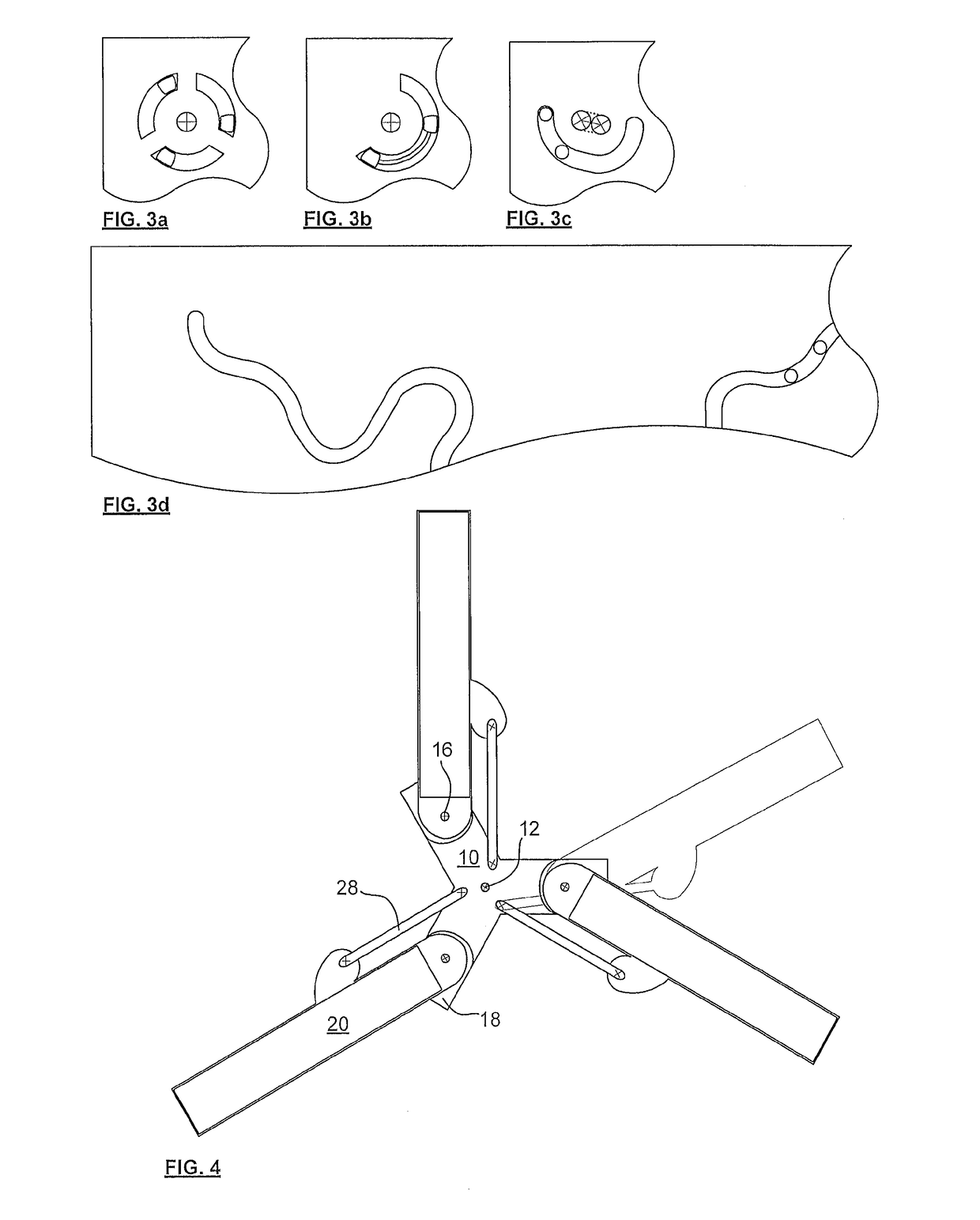Swivel Mount for Centrifugal Microfluidic Chip
a microfluidic chip and mounting plate technology, applied in fluid controllers, centrifuges, chemistry apparatus and processes, etc., can solve the problems of insufficient force of gravity, and difficulty in controlling movement, and achieve the effect of adding substantial costs
- Summary
- Abstract
- Description
- Claims
- Application Information
AI Technical Summary
Benefits of technology
Problems solved by technology
Method used
Image
Examples
example
[0105]An example of a centripetally operated swivel mount designed with two chip holders coupled by springs, is imaged in FIG. 13. FIGS. 13a-c show the swivel mount having a mass of 50 g mounted on a supporting plate by an axial revolute joint. The two identical coil springs between the chip parts had elastic constant k=83 N / m. FIG. 13a corresponds to a relaxed state of the swivel mount (angle −26°), while b and c show tensioned springs for 0° and 30° rotation angle respectively.
[0106]The swivel mount is formed of a base plate, which is required to support the axial revolute joint, and provides a throughbore for mounting to the centrifuge. The base plate has additional features that provide visual cues for identifying the angular disposition of the chip part, and permits additional chips to be mounted to the base plate. The joints each couple a respective chip part to the base plate, and the two chip parts are coupled by two coil springs. The fabrication of the base plate and chip p...
PUM
 Login to View More
Login to View More Abstract
Description
Claims
Application Information
 Login to View More
Login to View More - R&D
- Intellectual Property
- Life Sciences
- Materials
- Tech Scout
- Unparalleled Data Quality
- Higher Quality Content
- 60% Fewer Hallucinations
Browse by: Latest US Patents, China's latest patents, Technical Efficacy Thesaurus, Application Domain, Technology Topic, Popular Technical Reports.
© 2025 PatSnap. All rights reserved.Legal|Privacy policy|Modern Slavery Act Transparency Statement|Sitemap|About US| Contact US: help@patsnap.com



